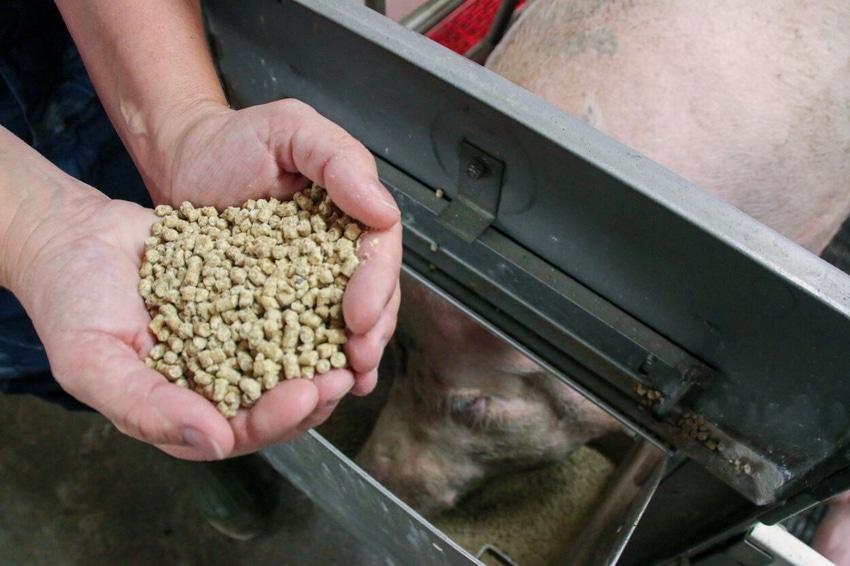Feed program design
Plan 167 days ahead, react 37 days ahead, execute 7 days ahead.
June 28, 2022

The lower left of my computer desktop screen is the current outdoor temperature. It currently reads 97 degrees Fahrenheit. Yes, we have hit the dog days of summer.
Our average daily feed intake goes from 4.75 pounds per day on a wean-to-finish basis during the fall and winter months to 4.30 pounds per day on a wean-to-finish basis (a 10% decrease). Our lactation feed intake goes from 16.1 pounds per day during the fall and winter months to 14.9 pounds per day (an 8% decrease).
A lack of planning and or communication of the feed program design can and will lead to disappointing market weights, lactation performance and breeding rates. However, if the feed program was set up in advance of when weaned pigs were placed on feed and the projected outcomes of the feed program were communicated and acted upon accordingly, then there is little need to be reactionary to these warm summer days. Instead, the wean-to-finish feed program should be planning about the harsh north winds and first snows of December.
Planning 167 days ahead
When setting up feeding programs, growth targets, space needs and market weight targets, it is crucial to understand the scenario of the growth period and the marketing window of pigs starting on feed. For example, a group of weaned pigs placed on feed on July 1 will have the first cut the week after Thanksgiving. The last cut for this example group will be the week before Christmas. Thus, while the current pork price is over $110 a hundredweight, growth rates and market weights are suppressed due to the summer heat.
The pigs weaned today will have their maximum feed intake and growth rate in the cool fall and winter months, where feed intake will not be limited. Furthermore, the current futures market has these pigs being marketed for around $85/cwt, well below most current breakeven projections. Therefore, while late finishing feeding programs should target intake and growth promotion to maximize return over costs, early growing and finishing feeding programs should target the least cost per pound of gain.
React 37 days ahead
Even though the feeding program was well thought out and planned 167 days or so in advance of when pigs will be marketed there are times when the economic or logistic scenario will change. The pork industry has been no stranger to volatile market changes in both input costs and output revenues over the past four years. There are situations where the market looks positive when pigs are placed on feed, but as the calendar advances the market has not developed or slid back. Thus, instead of needing to produce a 300-pound market weight average to maximize return over costs, a 285-pound market weight average is now ideal.
Feed programs, days on feed allotted and marketing strategies need to react swiftly to those changing scenarios. It is crucial to respond to these changes. If the feed program and corresponding plans are not responded to in the proper time, then dollars are left on the table.
Execute 7 days ahead
A well-thought-out plan is just that until acted. From a feed program design, it is key to have regularly scheduled reformulation to take advantage of changes in ingredient prices. For example, from June 16 to June 27, the July futures contract for corn dropped 6.2% while the July contract for soybean meal went up 3.5.%. This means if you are using diets formulated the second week of June, you are using too much SBM and not enough corn, distiller's dried grains with solubles and synthetic amino acids to fully achieve the least cost per pound of gain.
Furthermore, it is crucial to execute at the mill level, feed delivery level and on-slat level to ensure that the feeding program is executed at an elevated level throughout all stages.
Regardless of the plan or how often the feed program needs updating due to market swings the secret key is communication. The production, growth, feed efficiency, days on feed, marketing cuts and market weight targets should all be well-known information from the board room to the slat level. It is just as important to think about today's finishing pigs as it is the pigs that will be placed on the feed today and marketed during the holiday season.
Source: Trey Kellner, who is solely responsible for the information provided, and wholly owns the information. Informa Business Media and all its subsidiaries are not responsible for any of the content contained in this information asset.
You May Also Like



